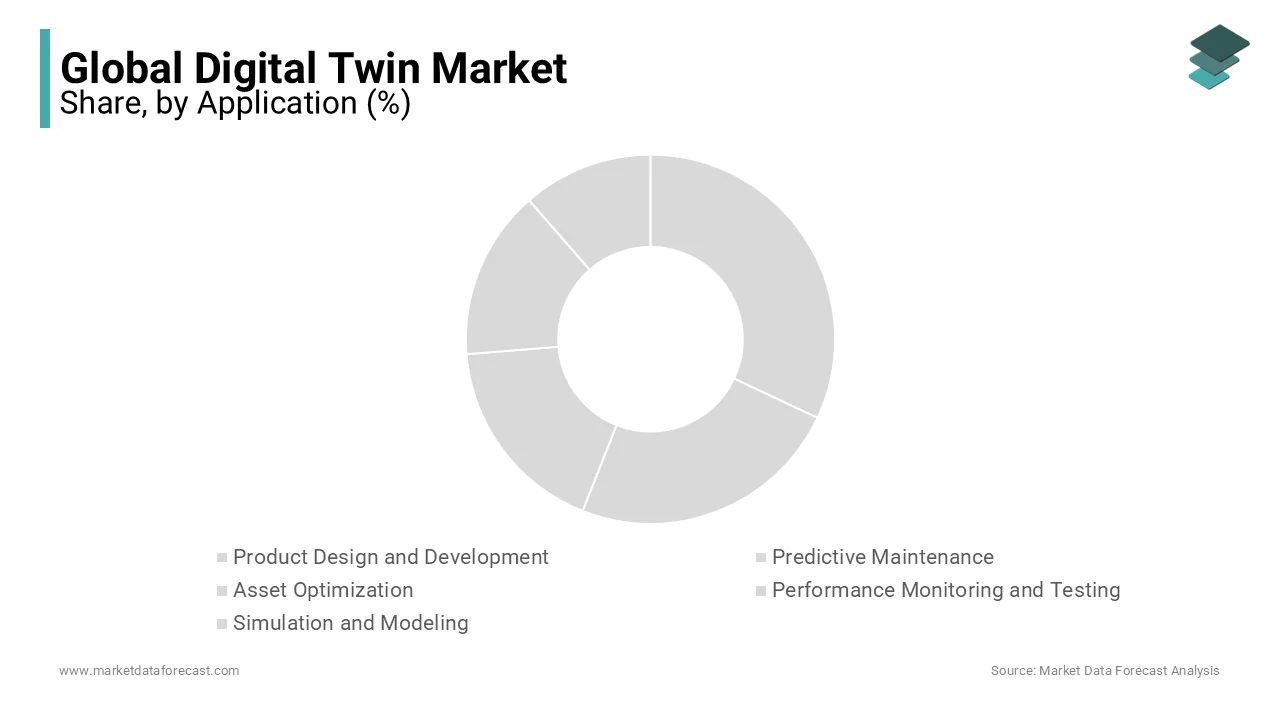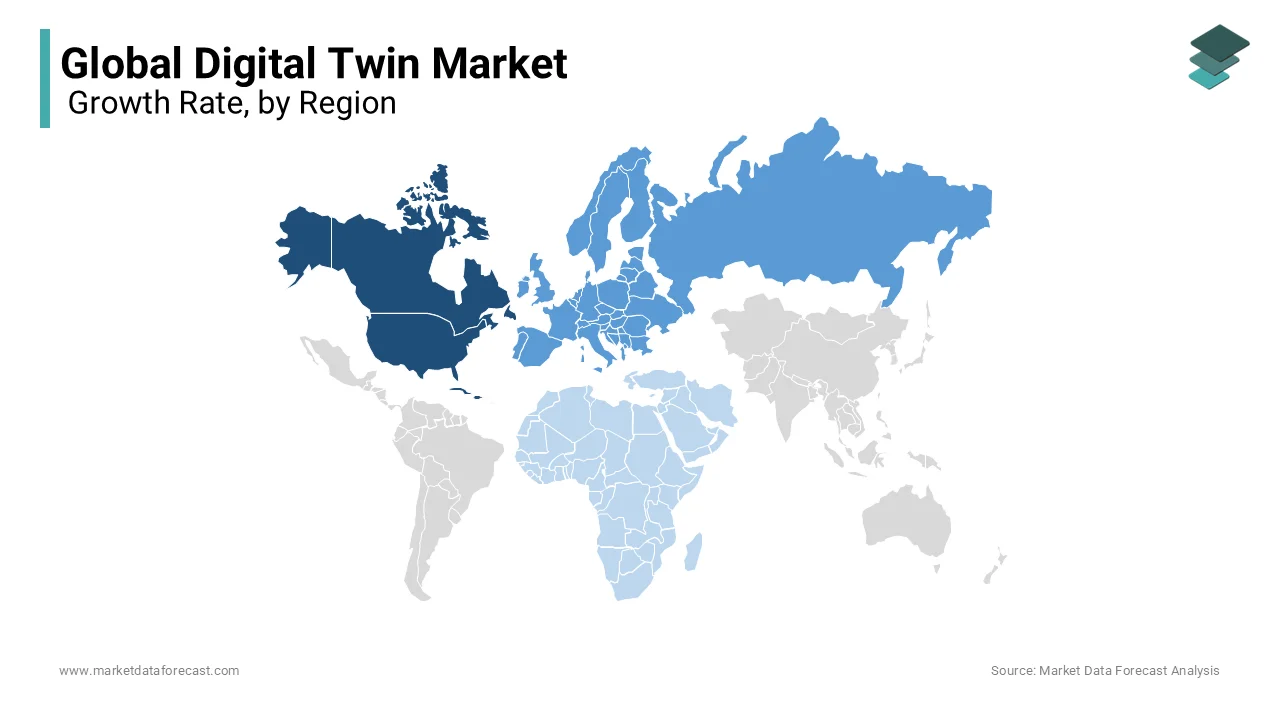Global Digital Twin Market Research Report - Segmentation By Type (Process, System and Product), By End- Industry (Aerospace & Defense, Energy & Utilities, Home & Commercial, Automotive & Transportation, Healthcare, Oil & Gas), By Region (North America, Latin America, Europe, Asia-Pacific, Middle East & Africa) - Global Industry Analysis on Size, Share, Trends, Forecast & Growth | 2024 to 2032.
Global Digital Twin Market Size (2024-2032):
The size of the global digital twin market was worth USD 19.09 billion in 2023. The global market is anticipated to grow at a CAGR of 36.94% from 2024 to 2032 and be worth USD 323.28 billion by 2032 from USD 26.14 billion in 2024.
MARKET DRIVERS
The primary factor driving the digital twin market is the increasing adoption of Industry 4.0 and Internet of Things (IoT) technologies.
Industry 4.0 is the fourth industrial revolution that integrates sophisticated technologies such as artificial intelligence, machine learning, and big data analytics into manufacturing and production processes. Digital twin technology plays a crucial role in Industry 4.0 by allowing businesses to construct virtual models of their physical assets and systems, thereby enabling simulation and analysis of their performance in a virtual environment. IoT is a network of tangible devices and sensors that exchange data over the Internet and communicate with one another. Digital doppelganger technology can utilize data generated by Internet of Things (IoT) devices to generate a more accurate and realistic virtual representation of physical assets and systems. Collectively, Industry 4.0 and IoT technologies are propelling the adoption of digital twin technology in a variety of industry verticals. Digital twin technology enables these industries to optimize their operations, reduce costs, and increase productivity, which is a major factor driving the digital twin market.
MARKET RESTRAINTS
Data privacy and security concerns act as a barrier to the digital twin market growth.
Digital twin technology relies on the collection and analysis of vast quantities of data, which may contain sensitive information such as intellectual property or personally identifiable information. Investing in robust security measures to defend against cyber-attacks and data breaches is necessary for the widespread adoption of digital twin technology. The dearth of skilled professionals able to develop and implement digital twin solutions is a limitation. Digital twin technology is a complex and specialized field that necessitates knowledge of multiple disciplines, including software engineering, data analytics, and modeling and simulation. Companies that need to employ specialized consultants to develop and implement digital twin solutions may incur additional expenses due to the dearth of qualified personnel. Additionally, a scarcity of qualified professionals can cause project schedule delays and lower-quality solutions to be developed. The high initial investment required to implement digital twins is another significant limitation. Costs associated with developing and implementing digital twin solutions can be substantial, particularly for small and medium-sized businesses (SMEs) that may lack the capital to invest in such technology. This may hinder the demand of the digital twin market.
MARKET OPPORTUNITIES
The increasing adoption of cloud-based digital twin solutions presents the largest opportunity for the digital twin market.
The advantages of cloud-based solutions over traditional on-premises solutions include scalability, flexibility, and cost-effectiveness. With cloud-based digital twin solutions, businesses can simply scale up or down their operations based on demand and pay only for the resources they consume without having to make substantial infrastructure investments upfront. In addition, cloud-based solutions can facilitate real-time data processing and analysis, which is essential for industries such as manufacturing and healthcare that require prompt decision-making and responsiveness. In addition to sophisticated analytics and machine learning capabilities, cloud-based digital twin solutions can help businesses optimize their operations and increase their efficiency. Integration of digital twin technology with other emergent technologies such as artificial intelligence (AI), machine learning, and blockchain presents another opportunity for the digital twin market. The integration of these technologies enables businesses to obtain a greater understanding of their operations, automate their decision-making processes, and enhance their overall performance.
REPORT COVERAGE
|
REPORT METRIC |
DETAILS |
|
Market Size Available |
2023 to 2032 |
|
Base Year |
2023 |
|
Forecast Period |
2024 to 2032 |
|
CAGR |
36.94% |
|
Segments Covered |
By Application, End-use Industry, Deployment type, and Region. |
|
Various Analyses Covered |
Global, Regional, & Country Level Analysis; Segment-Level Analysis, DROC, PESTLE Analysis, Porter’s Five Forces Analysis, Competitive Landscape, Analyst Overview of Investment Opportunities |
|
Regions Covered |
North America, Europe, APAC, Latin America, Middle East & Africa |
|
Market Leaders Profiled |
Oracle Corporation, Accenture PLC, Honeywell International Inc., ABB Ltd., Robert Bosch GmbH, Siemens PLM Software Inc., Fujitsu Ltd., Bentley Systems Incorporated, Schneider Electric SE., and Others. |
SEGMENTAL ANALYSIS
Global Digital Twin Market Analysis By Application
In the digital twin market, predictive maintenance is regarded as one of the most significant and rapidly expanding segments. Utilizing sensors, machine learning algorithms, and analytics to monitor the performance of equipment and predict when maintenance is required to avoid delay or failure is predictive maintenance. Digital twin technology enables organizations to construct a virtual replica of the equipment, which can be used to simulate various scenarios and optimize maintenance schedules.
In terms of application, other important segments of the digital twin market include product design and development, asset optimization, performance monitoring, and testing, simulation, and modeling.
Global Digital Twin Market Analysis By End-use Industry
The manufacturing industry is regarded as one of the largest and fastest-growing segments of the digital twin market. Using digital twin technology, manufacturing companies are creating virtual replicas of their factories, machinery, and production processes in order to simulate and optimize various scenarios and make data-driven decisions. By identifying potential problems and optimizing production schedules, digital twins can help manufacturers improve product quality, increase efficiency, and reduce downtime. Digital twin technology can be used to simulate and optimize the design, development, and performance of aircraft and other defense equipment, making the aerospace and defense industry another significant segment of the digital twin market. In terms of the end-use industry, other significant digital twin market segments include healthcare, automotive, energy and utilities, and construction and architecture. In the healthcare industry, digital twins can be used to generate virtual models of patient anatomy and simulate medical procedures. In the automotive industry, digital twins can be used to simulate and optimize vehicle design and performance. In energy and utilities, digital twins can be used to optimize the performance of power plants and other energy infrastructure, whereas in construction and architecture, they can be used to simulate and optimize the building design and construction processes.
Global Digital Twin Market Analysis By Deployment Type
The cloud-based deployment segment dominates the digital twin market in terms of deployment type. The advantages of cloud-based deployment over on-premises deployment include scalability, flexibility, and cost-effectiveness. With cloud-based deployment, businesses can gain access to digital twin technology via a web browser or mobile application without the need for costly hardware or infrastructure. The cloud-based deployment also enables businesses to scale up or down their digital twin capabilities without incurring significant up-front expenses. The cloud-based deployment also enables businesses to access the most recent digital twin technology, as software updates and new features can be automatically delivered via the cloud. This ensures that businesses always have access to the latest technology and can maintain a competitive advantage.
However, on-premises deployment is still used in some instances, particularly in industries where data privacy and security are of paramount importance, such as the defense and healthcare sectors. On-premises deployment also provides greater control over data and permits businesses to tailor digital twin technology to their particular requirements.
REGIONAL ANALYSIS
The North American digital twin market shares have dominated over the past few years.
The presence of key players, including IBM, Microsoft, and Oracle, in North America is a major driving factor for the market to grow. The primary growth drivers in this region are the increasing adoption of IoT and big data analytics, as well as the rising demand for digital twins in the manufacturing, healthcare, aerospace, and defense sectors.
The digital twin market in Europe is also substantial, with the United Kingdom, Germany, and France as the leading nations in the region. Due to the increasing adoption of Industry 4.0 and the expanding demand for digital twins in the automotive and aerospace industries, the region is experiencing significant growth.
The digital twin market in Asia-Pacific is the world's fastest-growing market, with China and Japan as the dominant nations in the region. Due to the increasing adoption of IoT and big data analytics, as well as the growing demand for digital twins in the manufacturing, healthcare, energy, and utilities industries, the region is experiencing significant growth.
The Latin American digital twin market is relatively small compared to markets in other regions, but it is developing rapidly due to the increasing adoption of Industry 4.0 and the rising demand for digital twins in the manufacturing and construction industries.
The digital twin market in the Middle East and Africa is expanding, with the United Arab Emirates and South Africa as the dominant nations in the region. Due to the increasing adoption of IoT and big data analytics, as well as the growing demand for digital twins in the manufacturing and energy, and utilities industries, the region is experiencing significant growth.
KEY PLAYERS IN THE GLOBAL DIGITAL TWIN MARKET
Companies playing a prominent role in the global digital twin market include Oracle Corporation, Accenture PLC, Honeywell International Inc., ABB Ltd., Robert Bosch GmbH, Siemens PLM Software Inc., Fujitsu Ltd., Bentley Systems Incorporated, Schneider Electric SE, and Others.
DETAILED SEGMENTATION OF THE GLOBAL DIGITAL TWIN MARKET INCLUDED IN THIS REPORT
This research report on the global digital twin market has been segmented and sub-segmented based on application, end-use industry, deployment type, and region.
By Application
- Product Design and Development
- Predictive Maintenance
- Asset Optimization
- Performance Monitoring and Testing
- Simulation and Modeling
By End-Use Industry
- Manufacturing
- Aerospace and Defense
- Automotive
- Healthcare
- Energy and Utilities
- Construction and Architecture
By Deployment Type
- Cloud-Based
- On-Premises
By Region
- North America
- Europe
- Asia Pacific
- Latin America
- Middle East & Africa
Frequently Asked Questions
What is the estimated size of the Digital Twin Market by 2029?
The Digital Twin Market is projected to reach USD 323.28 billion by 2032, with a growth rate (CAGR) of 36.94% from 2024 to 2032.
What are the primary drivers and opportunities fueling the growth of the Digital Twin Market?
The increasing adoption of Industry 4.0 and IoT technologies, along with the benefits of optimizing operations, reducing costs, and enhancing productivity, are driving the Digital Twin Market. Opportunities lie in cloud-based solutions and the integration of digital twin technology with AI, machine learning, and blockchain.
How has COVID-19 impacted the Digital Twin Market, and what are some recent developments in the market?
COVID-19 initially caused setbacks in industries like automotive and aerospace but increased opportunities in healthcare. Recent developments include NVIDIA's release of an AI-based platform for virtual twin solutions and collaborations between companies like L & T Technology Services Limited, Microsoft, and Bentley Systems to enhance loT-based engineering practices.
Related Reports
Access the study in MULTIPLE FORMATS
Purchase options starting from $ 2500
Didn’t find what you’re looking for?
TALK TO OUR ANALYST TEAM
Need something within your budget?
NO WORRIES! WE GOT YOU COVERED!
Call us on: +1 888 702 9696 (U.S Toll Free)
Write to us: [email protected]


